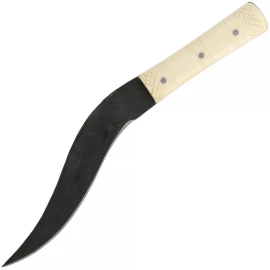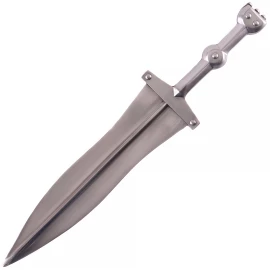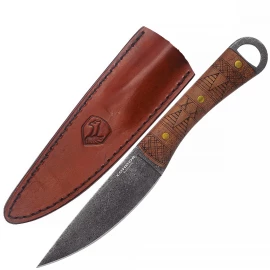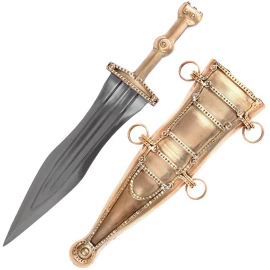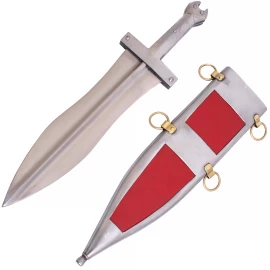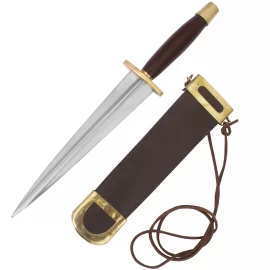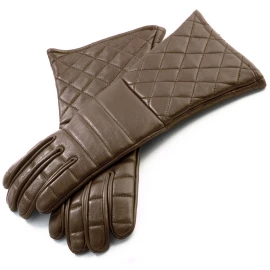Katara, short punching sword
A Kattari, Katara or Katar (Devanāgarī: कटार, kaţţāri, kaţāra), also known as a suwaiya or Bundi dagger, is a type of short punching sword that originated in South India as "Kattari" and spread throughout India. It is used to make swift and quick attacks. It is notable for its horizontal hand grip, which results in the blade of the sword sitting above the user's knuckles. Three other examples of bladed weapons native and unique to India are the Khanda, Urumi and Pata. More information...
Katara (sword), a short punching sword, India - 18th cen.
- Total length approx. 495mm
- Blade length approx. 279mm
- Blade profile approx. 52 x 5mm
- Blade profile 5cm from the tip approx. 17 x 5mm
- Length of the grooves of about 246mm
- The handle frame is made of a steel rod with a ca 15 x 4mm profile
- The handle consists of two cones about 94mm long, about 39mm diameter
- POB about 0cm
- Weight without sheath approx. 660 g (sharp blade)
- Weight including sheath approx. 750 g
- Blade of spring steel W.Nr. 1.7102 (DIN 54SiCr6) quenched to a hardness of approx. 53 HRC
Made in the Czech Republic.
Typically, kattaris were used in close range hand-to-hand combat, which is effective in armour piercing. The blade was often corrugated for additional strength. "Hooded kattaris" have a shield extending over the back of the user's hand. The handle sides were also used to block attacks, since all kattaris had an "H"-shaped handle. Because of the nature of the weapon, attacks were mainly direct thrusts that would easily pierce the enemies' armor with a single but strong blow, possible because of the light weight and amazing attack speeds that could be achieved. The use of poisons was another deadly way of increasing the katara's effectivity in battle. Kattaris ceased to be in common use in the 19th century.
The Kattari is one of the oldest and most characteristic of the Indian knife weapons. Its peculiarity lies in the handle which is made up of two parallel bars connected by two, or more, cross pieces, one of which is at the end of the side bars and is fastened to the blade. The remainder forms the handle which is at right angle to the blade. The blades are always double-edged and are generally straight and with lengths from a few inches to about 3 feet. The blades of southern India are often made broad at the hilt and taper in straight lines to the point, and elaborately ribbed by grooves parallel to the edges. European blades of the 16th and 17th centuries were often used, especially by the Maratha Empire and were always riveted to projections from the hilt.
Please read our: Directions for the use of bladed weapons.
We are here for you











